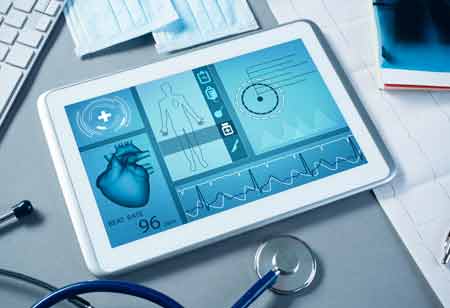THANK YOU FOR SUBSCRIBING
How Digital Transformation Influences Healthcare Facilities?
IT has become critical in supporting the delivery of digital services, and the sector has had to turn to technology providers to ensure operational consistency for increasingly digitized treatments, as well as security for the safety of patien

By
Apac CIOOutlook | Wednesday, April 14, 2021
Stay ahead of the industry with exclusive feature stories on the top companies, expert insights and the latest news delivered straight to your inbox. Subscribe today.
IT has become critical in supporting the delivery of digital services, and the sector has had to turn to technology providers to ensure operational consistency for increasingly digitized treatments, as well as security for the safety of patient data, in order to meet rising demand.
Fremont, CA: Adaptability is a requirement in the healthcare industry. The industry rapidly grows and expands, from general practitioners to the busiest and most critical care wards in hospitals, with technological advances causing dramatic change each year.
With over 10.34 million Internet of Things (IoT), connected devices predicted to be used in European healthcare by 2025, developments in artificial intelligence (AI), networking, and data growth mean that today's aging networks and IT systems will need to be entirely rebuilt. Several goals have changed due to the reforms, but they remain critical to providing patient care. These include, but are not limited to, increasing patient satisfaction, ensuring the safety of patients and staff, and growing process performance.
Crucial to the mission, IT has become critical in supporting the delivery of digital services, and the sector has had to turn to technology providers to ensure operational consistency for increasingly digitized treatments, as well as security for the safety of patient data, in order to meet rising demand. IT teams have many ways to ensure greater on-site protection for all healthcare organizations, regardless of size or form, as they navigate these ever-changing and challenging times.
The first step is to invest in (or upgrade) current physical infrastructure networks to ensure that they can meet power demands. The next step is to ensure resilient power, which also entails maintaining that healthcare equipment and mission-critical IT remain operational in the event of a power outage. Uninterruptible Power Supplies (UPS), for instance, provide battery-based backup power in the event of a blackout or breakdown, allowing for network service stability and patient care to continue.
Secure edge computing solutions and micro data centers have standardized, repeatable, and pre-integrated IT systems that meet increased digital demands while protecting patient data. Knowing that their technology will work as planned from the moment it is operational offers both peace of mind and the opportunity to serve both on-premise and cloud-based applications under a single framework for IT professionals with multiple locations. Edge computing systems like these are dependable, easy to deploy and provide excellent performance, ensuring application availability while modernizing previously obsolete networks.
Finally, but most importantly, remote monitoring tools should be used. One thing is needed for IT professionals to have a safe and stable infrastructure system: visibility. A remote management system can help detect any areas of vulnerability in a network, highlight possible failures in advance, and ensure uptime across dispersed sites by intervening before any harm from defective equipment is done.
See Also :- Top Digital Transformation Solution Companies





